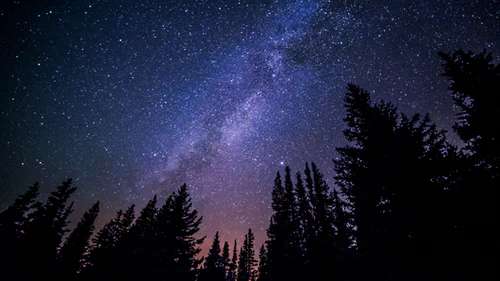Astronomy is a popular hobby that people of all ages can enjoy. If you are one of them, you probably have a telescope or are part of the local astronomy club. But if not, then astrophotography is a good place for you to start to get a feel of what astronomy is all about. So, in a nutshell, astrophotography is the art of taking astronomical or celestial subjects ranging from landscape photos of the night sky to close-up images of galaxies.

Many astrophotographers started by taking photos of the captivating night sky using their phone and sharing them on social media. Others became inspired because of a beautiful landscape shot of a starry night they saw on the internet.
Getting Started in Astrophotography
If you are a beginner in astrophotography, it would be best to take photos of the star trail or nightscape images first. That is because all of the equipment you need for these are just in your camera bag. You can even use your phone. But, you need to check astrophotography with a phone camera guide first.
Another reason is that it’s a fun way for you to get out of the city and enjoy the clear night sky.
To enjoy your astrophotography, below are some tips and techniques every beginner should know before taking pictures.
Tips and Techniques Every Astrophotographer Should Know
Anyone can take a picture of the night sky. But if you want to have something beautiful, you should follow these tips.
Plan Your Trip to Find A Clear Night Sky
Finding a clear night sky is one of the difficult parts of astrophotography, especially if you are in the city. That is because of light pollution everywhere. Cities have become so bright that people have lost appreciation of the night sky. Sometimes it’s not even enough to drive away from the city. Some communities can spread hundreds of miles that it might take you hours to find a good spot.
To make it easy, you can use the resources of the International Dark-Sky Association. They can give you locations on where the best places to do astrophotography.
Let Your Eyes Adjust
In case you don’t know, the human eye has its ISO settings. Well, maybe not literally, but it’s essential to understand dark adaptation if you want to take photos of the night sky.
You may have noticed it’s hard to see things at first when you enter a dark room. But after a while, things begin to become more visible. That is your eyes adjusting. This is a gradual process and can take up about 30 minutes to complete.
After that, you will be able to see more light once you look at the night sky. But there is a catch. Just one glance at something bright can ruin all the hard work of your eyes. That is why astronomers like to work in dark environments.
Shoot in Full Manual Mode
Even if you have the best camera, it will still have difficulty dealing with low light levels typical in astrophotography. That is why it’s all up to the skills of the photographer.
It’s essential to understand that not all nights are the same, and some adjustments can work one night but not the other. The more you take photos, the more you will realize that there is more light pollution in a place. In short, you will see a completely different world that your camera can only see.
To start, set the manual focus to infinity. Adjust until it’s a few notches from the stop and not a full stop of the lens focus barrel. There are many lenses with a focus beyond infinity, and you will have to fine-tune that.
Then set your ISO and exposure control to manual too. There’s going to be a lot of trial and error adjusting the three but you can use the camera meter for help.
Conclusion
Astrophotography is not an easy hobby. Getting out of the city and looking for the perfect location can take hours. But for those who love looking at the beautiful night sky, it’s all worth it. If you know someone who has the same passion as yours, share this article with them so they too can find joy in astrophotography.





